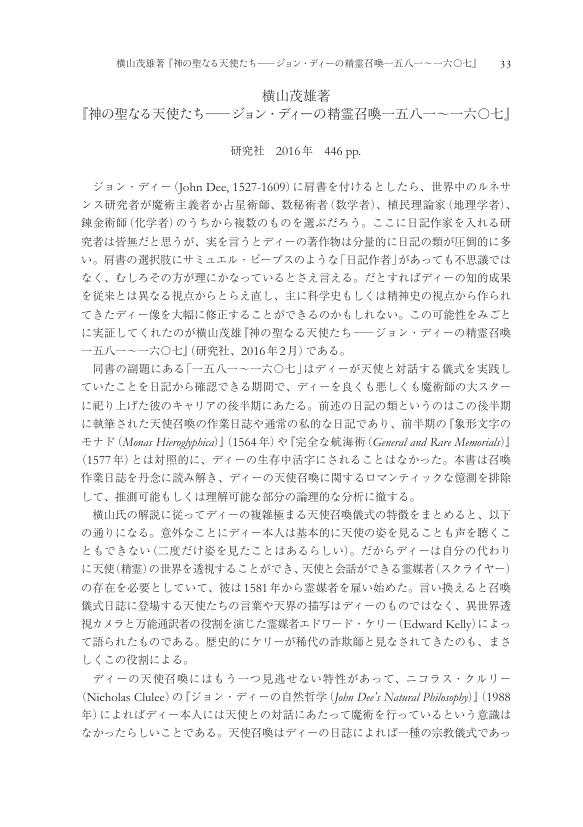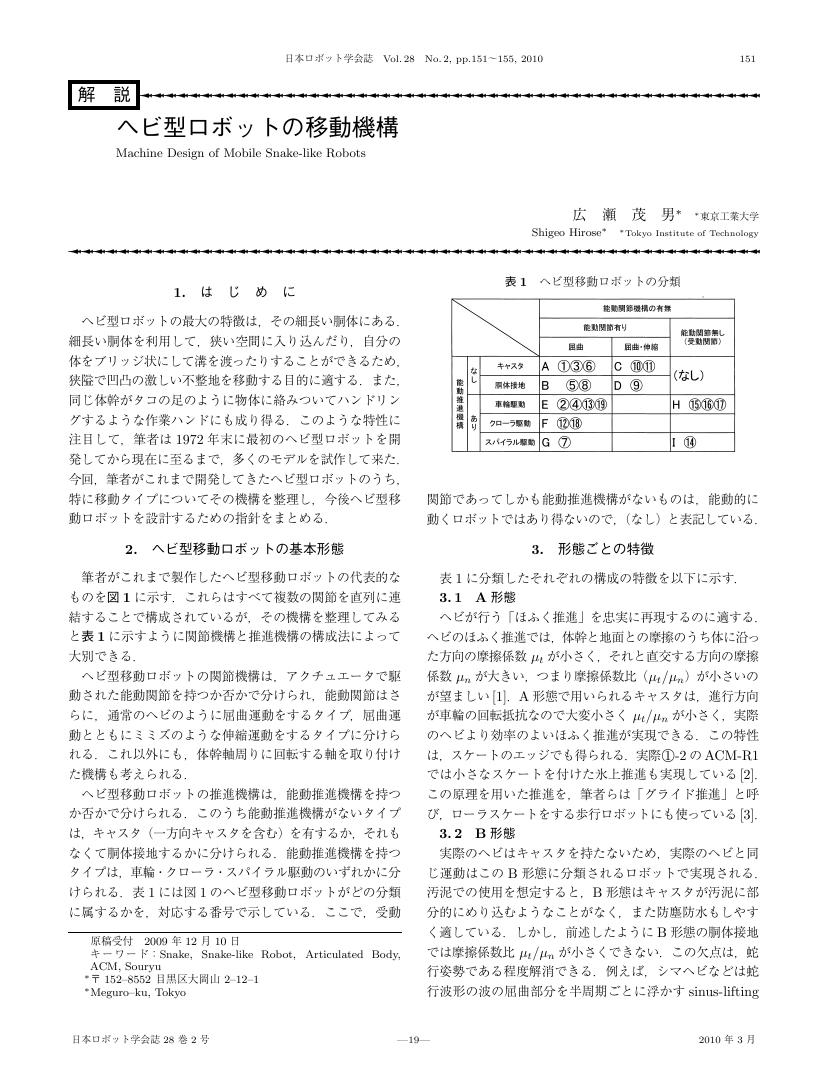- 著者
- 高梨 真行
- 出版者
- 東京国立博物館
- 雑誌
- 東京国立博物館研究誌 (ISSN:00274003)
- 巻号頁・発行日
- no.592, pp.33-54, 2004-10
1 0 0 0 お家の継承(6)"表裏比興"の裏の真実 真田昌幸
- 著者
- 童門 冬二
- 出版者
- 日経BP社
- 雑誌
- 日経ベンチャ- (ISSN:02896516)
- 巻号頁・発行日
- no.234, pp.130-133, 2004-03
表裏というのは「表と裏・言行不一致・嘘や偽り・裏切者」の意味があり、比興は「面白いこと・不都合なこと・卑しいこと」とある。この二つの言葉を合わせた表現はもちろん、褒め言葉ではない。むしろけなす言葉だ。今風に言えば、 「真田昌幸は、いつも人を裏切る卑しい男だ」 ということになる。 ところが、当の昌幸は、こうした評価など気にも留めなかった。
本研究は明治・大正期における日本陸軍の官僚制への関心から出発し、陸軍の末端組織である部隊、すなわち師団(内地師団)、そして陸軍の中央組織である三官衙(陸軍省、参謀本部、教育総監部)を主な研究対象とし、師団の陸軍内における位置づけ(師団とは何か)、行政運営(師団は何をする組織なのか)などの基礎課題を検討することに加え、師団と陸軍中央官庁(特にこれまで研究の蓄積が希薄であった教育総監部)との行政上のやり取りを分析することによって、明治・大正期における陸軍全体の行政運営の実態や各部署間の関係を明らかにし、さらに、陸軍という官僚組織の性格を解明しようとする研究である。
1 0 0 0 泡沫(バブル)第1部 虚構(3)政官財癒着の申し子
- 出版者
- 日経BP社
- 雑誌
- 日経ビジネス (ISSN:00290491)
- 巻号頁・発行日
- no.1012, pp.82-86, 1999-10-18
10月5日、2信組事件で背任罪に問われていたイ、アイ、イ(EIE)グループ総帥、高橋治則に対して懲役4年6カ月の実刑判決が言い渡された。 東京地方裁判所第104号法廷の中央にやや青ざめた表情で直立した高橋に、裁判長は「(信用組合の経営者として)任務違反の程度も著しく、巧妙悪質である」と指弾した。
1 0 0 0 OA 妊婦・授乳婦への薬物投与
- 著者
- 村島 温子
- 出版者
- 一般社団法人 日本耳鼻咽喉科学会
- 雑誌
- 日本耳鼻咽喉科学会会報 (ISSN:00306622)
- 巻号頁・発行日
- vol.122, no.8, pp.1167-1169, 2019-08-20 (Released:2019-09-05)
- 参考文献数
- 6
1 0 0 0 OA 東京23区における小中学校跡地の活用実態と計画策定プロセス
- 著者
- 植田 有美 赤澤 聡 南 一誠
- 出版者
- 一般社団法人 日本建築学会
- 雑誌
- 日本建築学会技術報告集 (ISSN:13419463)
- 巻号頁・発行日
- vol.16, no.32, pp.273-277, 2010-02-20 (Released:2010-02-19)
- 参考文献数
- 7
Japan has been reached the real aged society with fewer children, and the number of school students is decreasing. As the society grows mature, the consolidation and the integration of the public schools are promoted, and the number of the closed school facilities is increasing. The authors investigated the planning process of reusing and utilizing closed school facilities, and the actual conditions of the facilities in the 23 wards in Tokyo. In this paper, the planning processes are classified and the effects of the different planning processes are analyzed. It was found from the result of the analysis that the planning processes had a variety of effects on reusing and utilizing closed school facilities.
1 0 0 0 OA [書評]横山茂雄著『神の聖なる天使たち ― ジョン・ディーの精霊召喚一五八一~一六〇七』
- 著者
- 中野 春夫
- 出版者
- 一般財団法人 日本英文学会
- 雑誌
- 英文学研究 (ISSN:00393649)
- 巻号頁・発行日
- vol.94, pp.33, 2017 (Released:2019-05-08)
- 著者
- 佐藤 宏之
- 出版者
- 国立歴史民俗博物館
- 雑誌
- 国立歴史民俗博物館研究報告 = Bulletin of the National Museum of Japanese History (ISSN:02867400)
- 巻号頁・発行日
- vol.182, pp.75-87, 2014-01
元和四年(一六一八)四月九日、幕府は大名改易後の居城の収公にさいし、城付武具はそのまま城に残し置くこととの方針を定めた。さらに、軍事目的のために備蓄した城米も引き継ぎの一環として、備蓄の有無と備蓄方針の確認を求めた。本稿は、国立歴史民俗博物館所蔵の石見亀井家文書のなかにある、元和三年の津和野城受け取りに関する史料を素材に、城受け取りのさいに引き継ぎの対象となる財(モノ)に着目する。城受け取りのさいには、城内諸道具の目録が作成され、それに基づいて引き継ぎが行われる。その目録化の過程において、武家の財は公有の財と私財とに峻別される。公有の財とは城付の武具・道具や城米であり、大名自身の私有物ではなく、幕府から与えられたモノといえる。すなわち、その帰属権が最終的に将軍に収斂していくものである。一方、私財とは大名や家臣の武具・家財や雑道具などであり、その処分は個々人の裁量に任せられたモノといえる。こうした動向の契機となったのが、天正一八年四月二九日に真田昌幸宛てに出した豊臣秀吉の朱印状ではないかという仮説を提示する。秀吉は、降伏した城々は兵粮・鉄砲・玉薬・武具を備えたままで受け取るという戦闘力を具備した城郭の接収確保を指示し、接収直後に破城とするのではなく、無抵抗で明け渡す城の力(兵粮・鉄砲・玉薬・武具)を温存した。秀吉は、その後の奥羽仕置を貫徹するなかで、諸国の城々は秀吉の城という実態と観念を形成していったのである。こうした城付の武具や城米を目録化することによって把握することは、城の力を把握することでもあった。したがって、近世の城の構成要素は、城付の武具と城米であったということができよう。このような城付の武具と城米を把握・管理した江戸幕府は、国家権力を各大名に分有させ、それを背景とした統治業務の分業化を行いつつも、幕府の国家的支配の体系のなかに編成していったと考えられる。On April 9, 1618, with reference to the seizure of a castle where a daimyo ( feudal lord) usually resided, the Shogunate decided on a policy that after daimyo kaieki (punishment by removal of samurai status and expropriation of territories) , any arms belonging to a seized castle must be left in place. Moreover, the Shogunate demanded to know the quantity and any storage conditions of jomai (rice originally reserved for military purposes) .Employing historical evidence concerning the seizure of Tsuwano Castle in 1617, which is found in documents relating to the Kamei family of Iwami Province in the possession of the National Museum of Japanese History, this paper focuses on possessions (assets) that were handed over upon seizure of the castle.Before accepting a castle, a complete inventory of all goods and materials within the castle was created, and based on this list, the castle was handed over. In the preparation process of the inventory, the assets of a samurai family were divided and assessed as belonging to either the government or the family.Government ownership concerned arms, tools, and jomai that belonged to the castle; they can be considered as possessions originally given by the Shogunate, not a daimyo's private possessions. That is to say, any right of possession was in the end attributed to the shogun. On the other hand, family possessions were arms, household goods, and miscellaneous tools of retainers, and their disposal was left to the individual daimyo's discretion.Such a trend was probably triggered by a shuinjo ( shogunal charter for trade) given by Hideyoshi Toyotomi to Masayuki Sanada on April 29, 1590. Hideyoshi gave directions to seize and secure a castle sufficiently provided with a military capability, more specifically, to receive surrendered castles complete with all food provisions, firearms, ammunition, and armor, in order to maintain the military power of any castle delivered without resistance, and not to destroy the castle immediately after seizure. Hideyoshi carried through the subsequent Punishment of the Ou region, during which he was actually putting into practice the concept that the castles in the provinces belonged to Hideyoshi.Understanding the quantity of military equipment and jomai that belonged to a castle by creating an inventory also allowed the assessment of the military capability of the castle. Therefore, one can safely state that the component parts of a castle in early-modern times were the weapons of war and jomai belonging to that castle.It can be considered that the Edo Shogunate, which understood and controlled the arms and jomai belonging to a castle, allocated some state authority to each loyal daimyo, and against the background of such a policy, while promoting the specialization of ruling and administrative work, the Shogunate was incorporating the policy into its own state ruling system.
- 著者
- 山本 二三丸 ヤマモト フミマル Fuminaru Yamamoto
- 雑誌
- 立教經濟學研究
- 巻号頁・発行日
- vol.44, no.1, pp.69-97, 1990
1 0 0 0 松江春次『蘭領ニューギニア買収案』についての一考察
- 著者
- 瀬戸 広大
- 出版者
- 法政大学史学会
- 雑誌
- 法政史学 (ISSN:03868893)
- 巻号頁・発行日
- no.94, pp.71-101, 2020-09
- 著者
- 白峰 旬
- 出版者
- 別府大学会
- 雑誌
- 別府大学大学院紀要 = Bulletin of Beppu University Graduate School (ISSN:13450530)
- 巻号頁・発行日
- no.19, pp.37-47, 2017-03
合戦の際に出される感状や合戦手負注文についての研究史としては、中世から戦国期に関する事例研究は豊富であるが、近世における事例研究はいまだ未開拓の分野であるといえよう。よって、本稿では近世(慶長5年)の事例研究として、慶長5年(1600)10月20日の江上合戦についての立花宗茂発給の感状と軍忠一見状(合戦手負注文)に関して考察をおこなう。
1 0 0 0 OA 地域在住要介護男性高齢者における身体各部位筋量と身体機能との特徴
- 著者
- 福尾 実人 村木 里志
- 出版者
- 日本理学療法士学会
- 雑誌
- 理学療法学 (ISSN:02893770)
- 巻号頁・発行日
- vol.47, no.6, pp.515-522, 2020 (Released:2020-12-18)
- 参考文献数
- 55
【目的】本研究の目的は,要介護高齢者の身体機能と身体各部位筋量の特徴を検討することである。【方法】対象は65 歳以上の地域在住男性高齢者53 名とし,健常高齢者(以下,健常群)と要介護高齢者(以下,要介護群)に分類した。身体機能の評価には,基本チェックリスト下位項目のNo.6 ~10 の質問を用いた。超音波B モード法を用いて身体8 部位の筋厚の測定に加え,身長,体重,BMI を測定した。【結果】要介護群は健常群よりも身体機能の総得点およびそれぞれの項目の得点が高かった。下腿前部および後部の筋厚のみ健常群よりも要介護群が有意に小さかった。【結論】要介護男性高齢者の場合,特に下腿前部と後部の筋量は低下することが示唆された。
- 著者
- 総務省消防庁国民保護・防災部応急対策室
- 出版者
- 消防庁
- 巻号頁・発行日
- 2011-03
1 0 0 0 OA うつ病と信仰 : 高倉徳太郎牧師を巡って
- 著者
- 大宮司 信
- 出版者
- 北翔大学
- 雑誌
- 北翔大学教育文化学部研究紀要 = Bulletin of Hokusho University School of education and culture department (ISSN:2189857X)
- 巻号頁・発行日
- vol.4, pp.141-156, 2019
1 0 0 0 IR 映画とインスタグラムが誘うスンバ : インドネシア東部における観光の発展
- 著者
- 小池 誠
- 出版者
- 桃山学院大学総合研究所
- 雑誌
- 桃山学院大学総合研究所紀要 = ST. ANDREW'S UNIVERSITY BULLETIN OF THE RESEARCH INSTITUTE (ISSN:1346048X)
- 巻号頁・発行日
- vol.46, no.2, pp.61-80, 2020-12-10
This paper is the second report on the research project titled "Interdisciplinary Study of Mutual Cultural Exchange between Japan and Indonesia(II)," which was funded by the ResearchInstitute of St. Andrew's University. Formerly, most people living in Jakarta and other big citiesin Java were not familiar with the name of Sumba Island, located on the periphery of easternIndonesia, one of the country's most sparsely populated and impoverished regions. Since fourIndonesian films shot on Sumba were released in the 2010s, however, the island has becomepopular as a tourist destination. Recent development of tourism is significant, as shown by statistics issued by local governments of East Nusa Tenggara Province and East Sumba Regency.The number of tourists visiting East Sumba increased annually from 2012 to 2017, with the increasing rate of domestic tourists more conspicuous than that of international tourists. This paper aims to explore how filmmakers based in Jakarta have represented the landscapes and cultures of Sumba and how these cinematic images attract tourists living in urban areas and influence the development of tourism on Sumba. The paper also discusses the importance of socialmedia from which people acquire travel information. This study of tourism focuses on four Indonesian films. Pendekar Tongkat Emas(The Golden Cane Warrior)is a martial-arts film directed by Ifa Isfansyah and released in 2014. The producers, Mira Lesmana and Riri Riza, selectedSumba as the shooting location for a legendary story developing in an anonymous land. Thesecond film, Susah Sinyal(Handphone is Difficult to be Connected), is a comedy directed byErnest Prakasa. Sumba appears as a vacation spot for a busy lawyer and her daughter living inJakarta. The third is Marlina si Pembunuh dalam Empat Babak(Marlina the Murderer in FourActs), a 2017 drama directed by Mouly Surya. The fourth is Humba Dreams, a 2019 film directedby Riri Riza and produced by Mira Lesmana, which depicts the growth of a Sumbanese studentcoming back from Jakarta. Rugged and undulating savannah hills and valleys, which are totallydifferent from Javanese landscapes, are highlighted in all the films. Especially, the film SusahSinyal depicts unique and beautiful tourist destinations such as Walakiri Beach and TanggeduWaterfall in East Sumba. In addition to films, social media that are prevalent among Indonesiansare contributing to the increase in domestic tourists. Most people can obtain sightseeing information easily by using smartphones. Visitors also often post photos they take at tourist destinations, as well as comments, on Instagram. These contents attract more tourists to Sumba aswell.
1 0 0 0 乱にいて治を忘れず(13)蒲生氏郷
- 著者
- 小和田 哲男
- 出版者
- 日経BP社
- 雑誌
- 日経ベンチャ- (ISSN:02896516)
- 巻号頁・発行日
- no.180, pp.84-87, 1999-09
蒲生氏は、近江国蒲生郡(現在、滋賀県蒲生郡)の郡名を苗字とする古代以来の近江の名族である。しかし、いつの時代からか、俵藤太秀郷たわらとうたひでさとの後裔といわれるようになり、藤原姓を称している。 のち、室町・戦国時代には、この地の守護大名から戦国大名になった六角氏の重臣に位置づけられ、氏郷の父賢秀かたひでのとき、織田信長に仕えている。
1 0 0 0 三方楽所の成立と南都楽人
- 著者
- 北堀 光信
- 出版者
- 地方史研究協議会
- 雑誌
- 地方史研究 (ISSN:05777542)
- 巻号頁・発行日
- vol.59, no.2, pp.42-51, 2009-04
1 0 0 0 OA 海外拠点における製品開発機能と人の現地化 ──トヨタ自動車の米国開発拠点の事例分析──
- 著者
- 石井 真一
- 出版者
- 日本経営学会
- 雑誌
- 日本経営学会誌 (ISSN:18820271)
- 巻号頁・発行日
- vol.38, pp.64-75, 2017 (Released:2019-09-03)
- 参考文献数
- 36
Research and development (R&D) internationalization, which generally follows sales and production internationalization, is critical for the innovation and the knowledge creation of multi-national enterprises (MNEs). However, the localization of R&D, especially new product development (NPD), at foreign subsidiaries has not been sufficiently analyzed. Previous research of NPD management suggested that Japanese automobile assemblers' NPD capability is characterized as an interdependency among varieties of tasks supported by careful integration and coordination. It is also suggested that since such NPD capability is based on Japanese culture and the country's social system, it is difficult to transfer to foreign countries. Our research addresses the following question: How did Japanese automobile assemblers transfer their NPD capability to foreign subsidiaries? We analyzed NPD projects at Toyota's R&D center in the U.S. and focused on the localization of NPD tasks and human resource management (HRM), such as recruiting and promoting local employees. Our first finding is that the localization of NPD tasks and HRM has progressed gradually in a long-term (15-20 years) period. Within that process, core project members shifted from dispatched Japanese expatriates in the early stage to American engineers as they accumulated NPD experience in the later stage. This implies that expatriate engineers play the main role of NPD activities and that HRM localization is initially difficult at foreign R&D subsidiaries. Second, various international collaborations and complicated coordination between the R&D center in the U.S. and its R&D headquarter in Japan were arranged and apparently brought in American engineers with affluent opportunities to learn the NPD capability. Third, the localization of NPD tasks and HRM localization progressed cautiously by confirming development quality. This observation implies that securing development quality is a condition of localizing R&D tasks and HRM at foreign subsidiaries that has generally been overlooked in previous research.
1 0 0 0 OA ヘビ型ロボットの移動機構
- 著者
- 広瀬 茂男
- 出版者
- 一般社団法人 日本ロボット学会
- 雑誌
- 日本ロボット学会誌 (ISSN:02891824)
- 巻号頁・発行日
- vol.28, no.2, pp.151-155, 2010 (Released:2012-01-25)
- 参考文献数
- 25
- 被引用文献数
- 4 9


